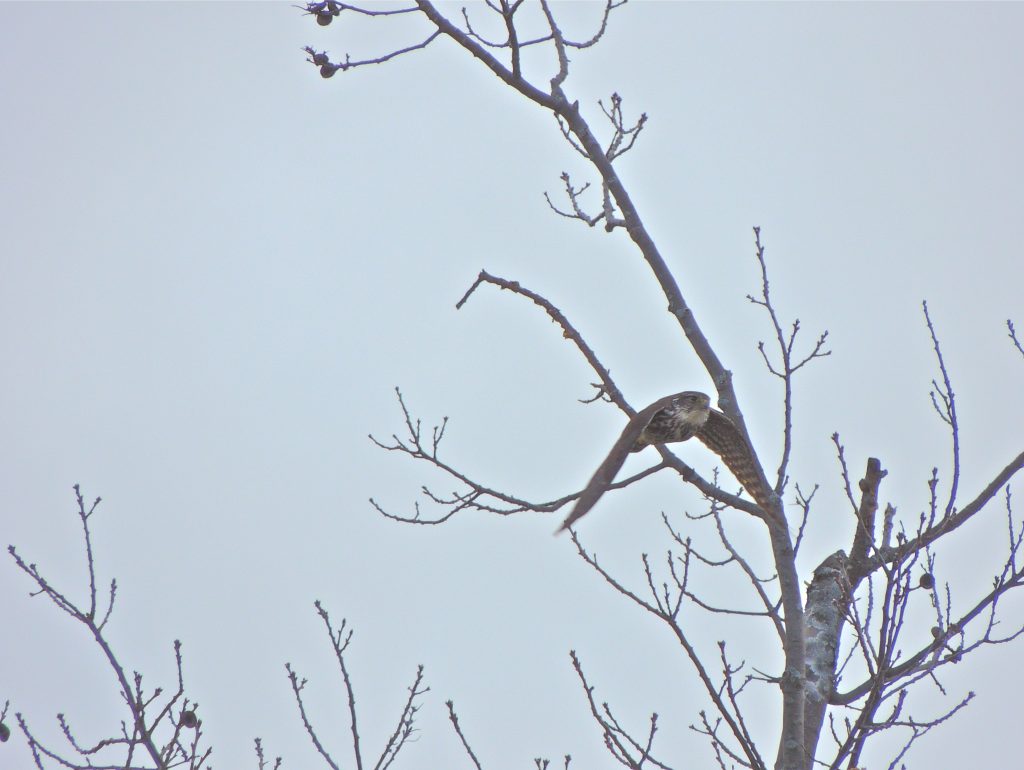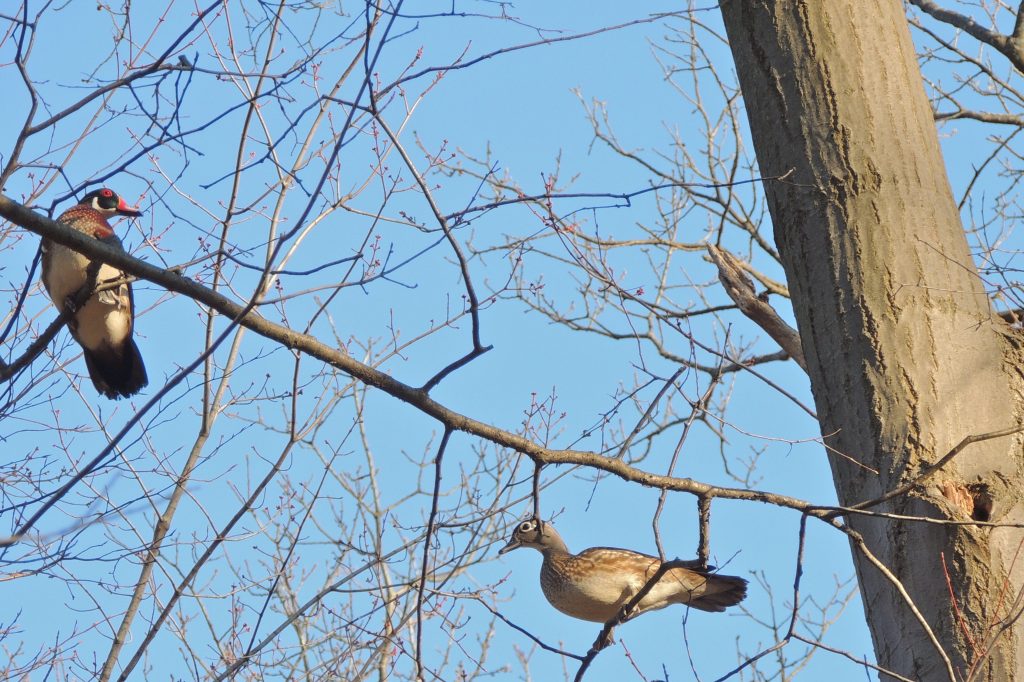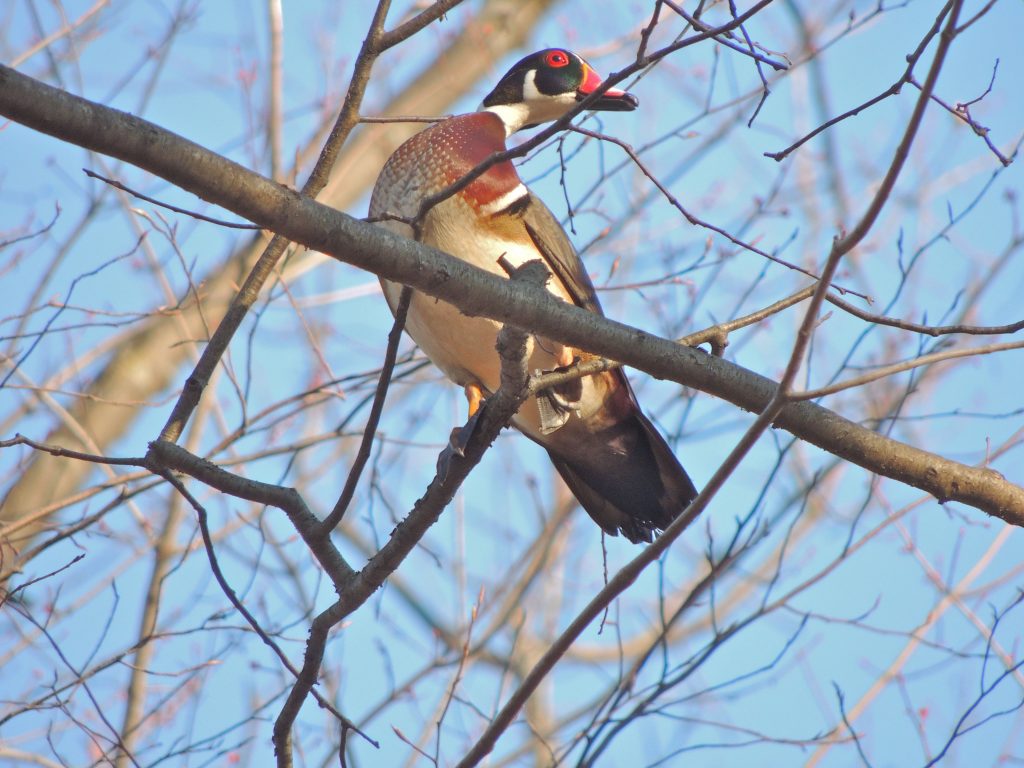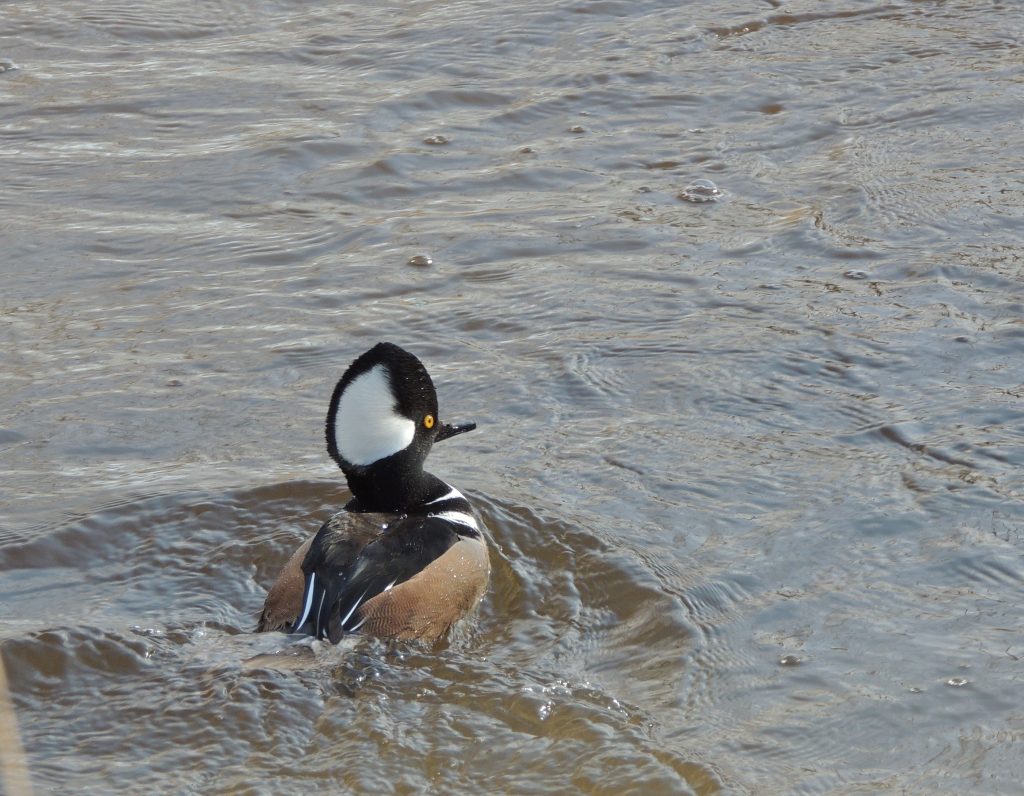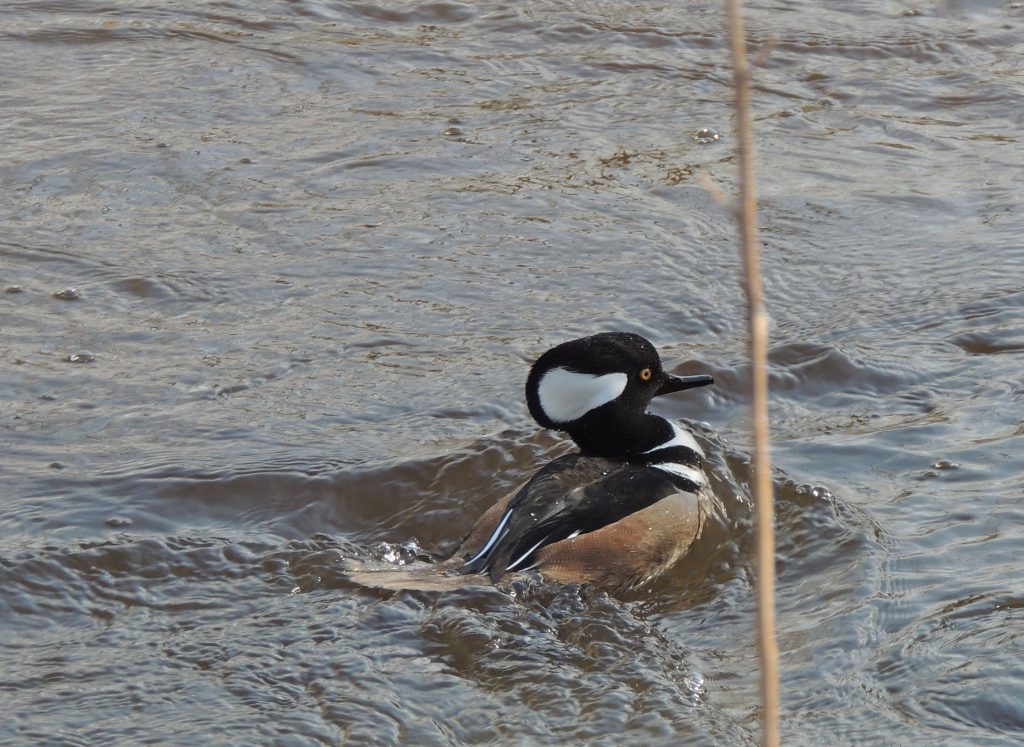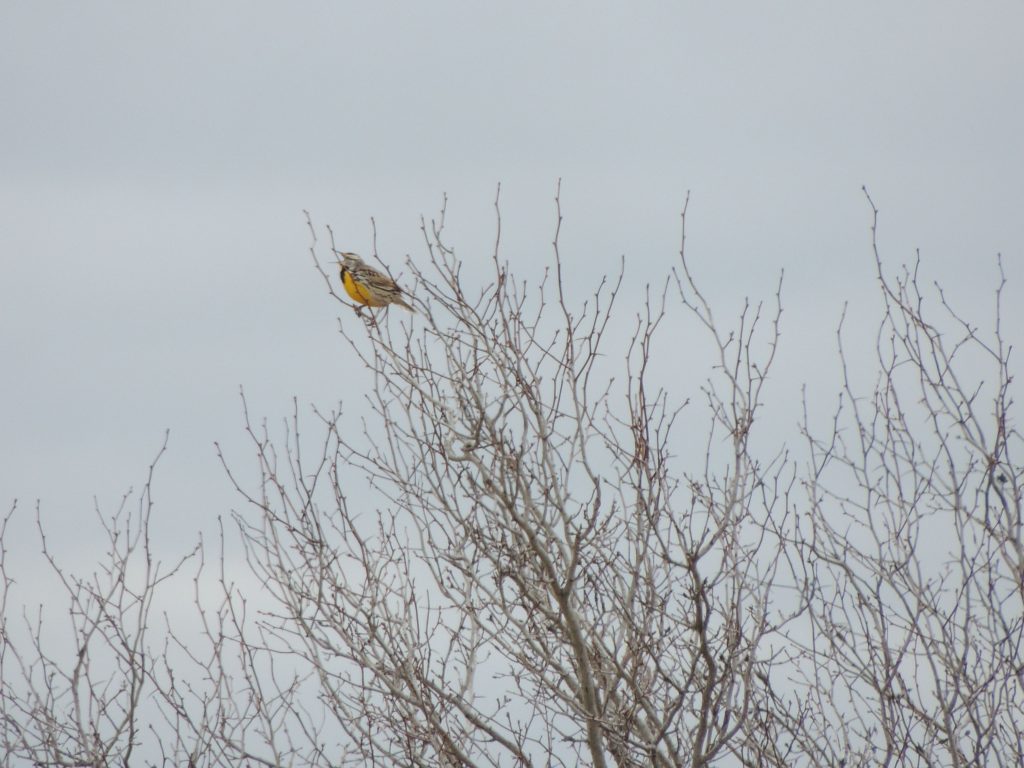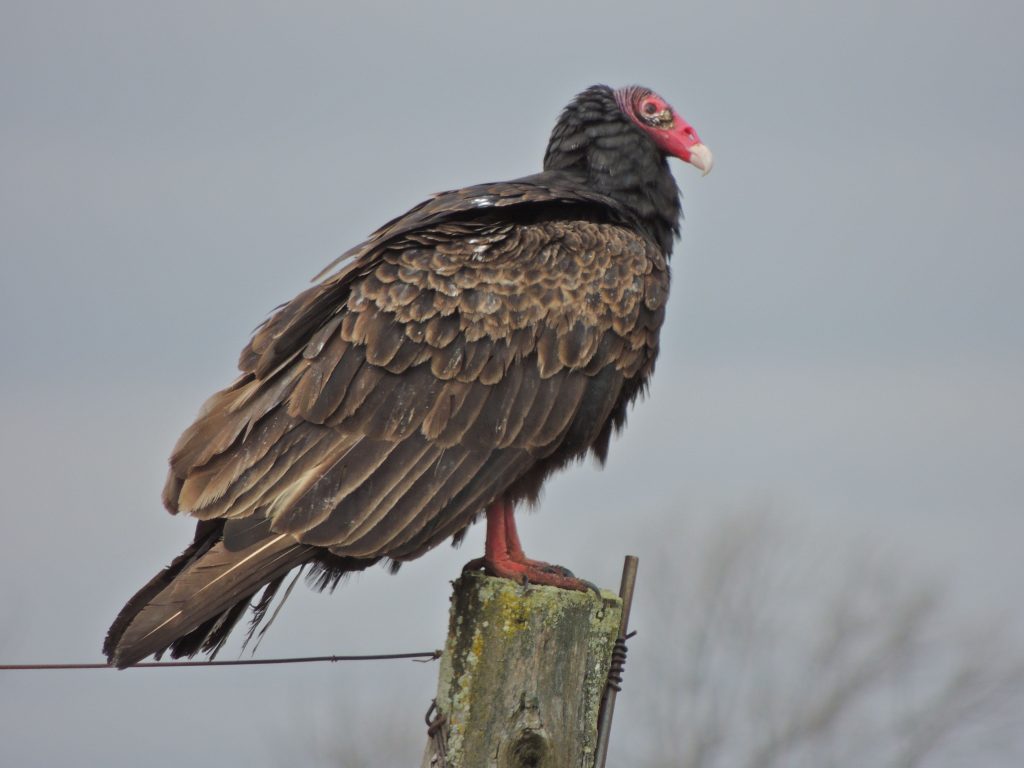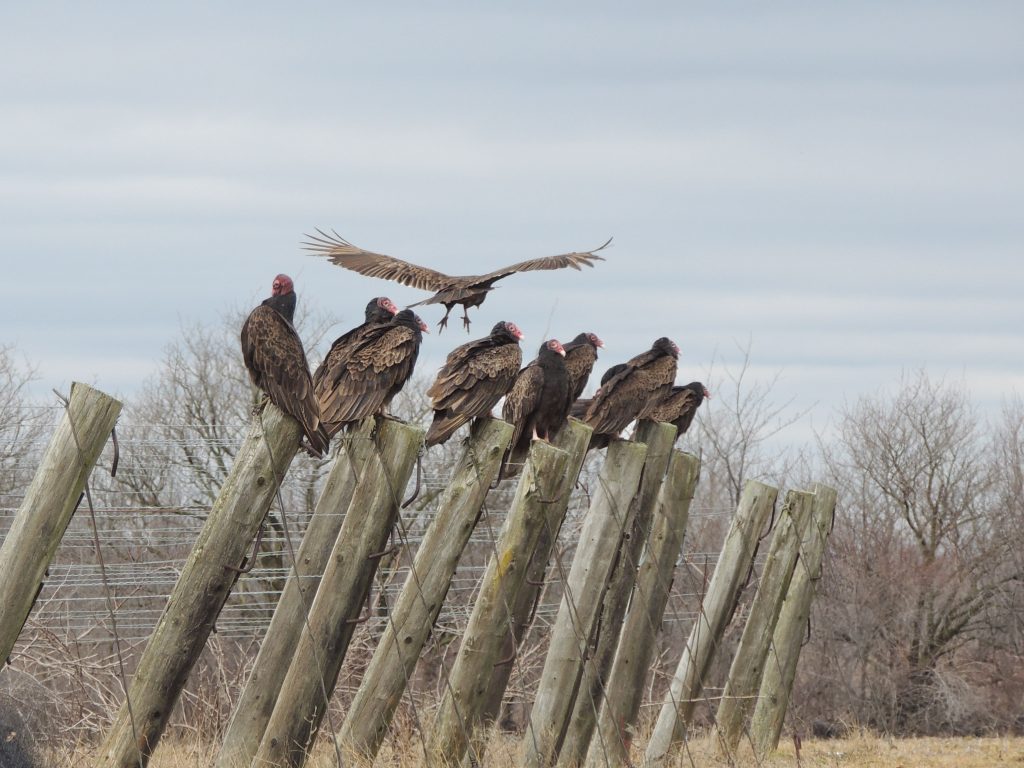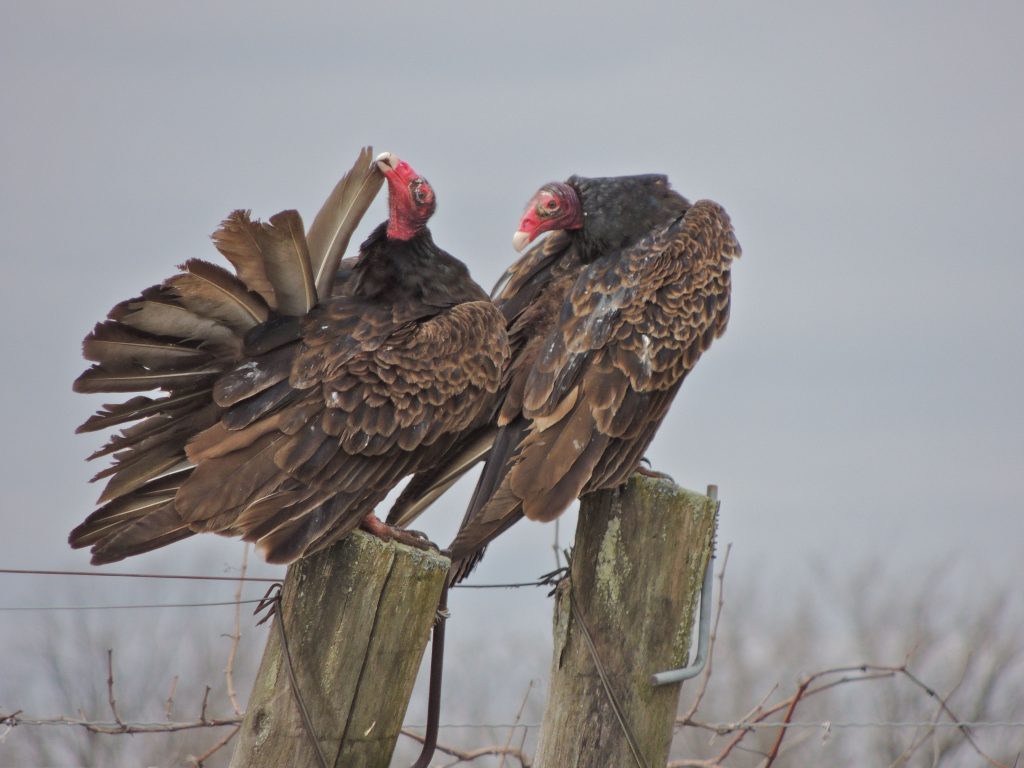April 7 2017. RBG Arboretum Hamilton, ON. A very birdy day today despite a nasty, totally uncalled-for blast of winter; twenty-four hours of cold wind and rains and overnight snow almost everywhere. But as this late-winter unkindness eased up, I set out to do one of our regular census circuits. In a fairly brisk hike around I tallied thirty-three species. Always the usual suspects: Downy Woodpeckers, White-breasted Nuthatch, Black-capped Chickadees, Red-winged Blackbirds and Song Sparrows, I could go on. And it was pleasant but not out of the ordinary to find several American Tree Sparrows, a couple of singing Carolina Wrens, a Belted Kingfisher and a pair of anxious Wood Ducks.
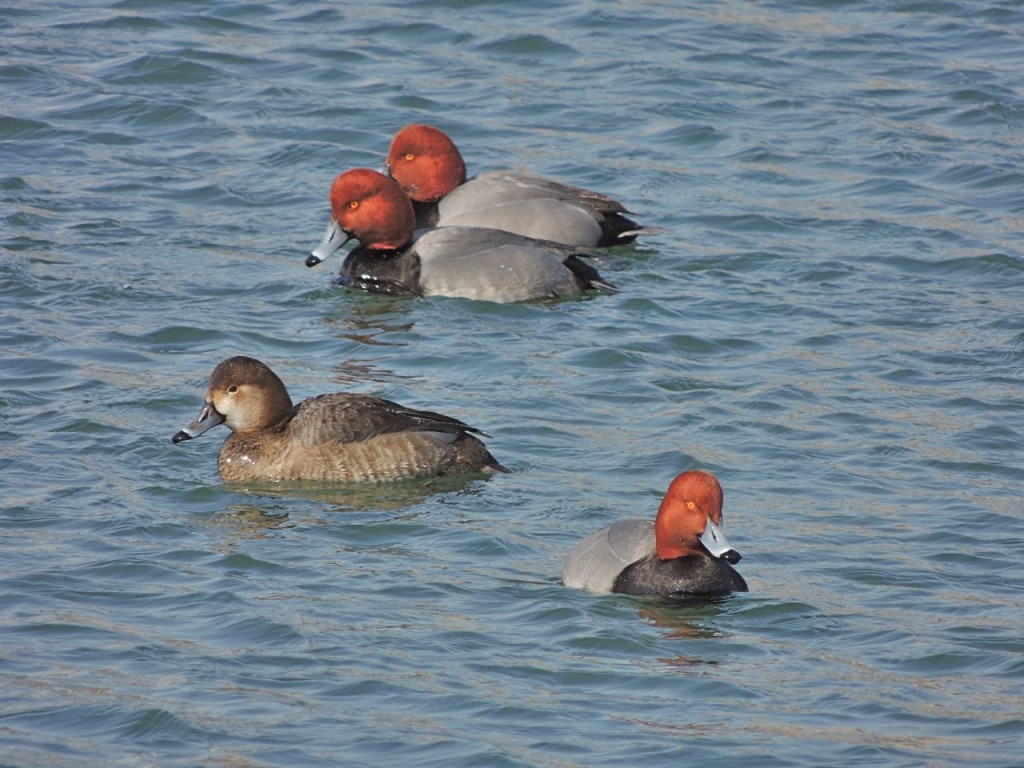
I had some special surprises, again not really out of season, but welcome: four Redheads, a subtly elegant, tidy and compact duck, and half a dozen Golden–crowned Kinglets picking their way through the lower levels of winter-bare trees. Kinglets are tough little customers, weighing six or seven grams (roughly the weight of a couple of coins) they are very late to head south in October and equally early to return – if return is the right word because they don’t go very far south and are known to be able to survive our northern winters.
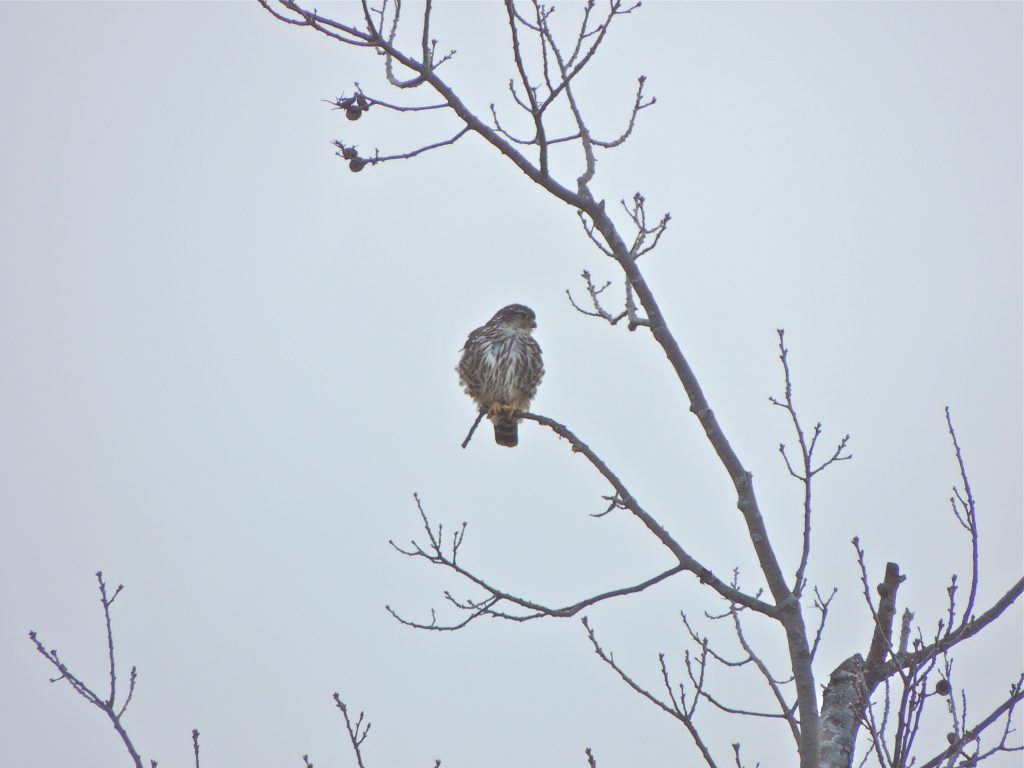
I would still be weighing which of the Redheads or the kinglets was my bird of the day had I not come across a Merlin as I approached the end of my census circuit. It was perching on the top of an exposed oak being buffeted by the strong northwest wind. I stared at it appreciatively taking in its overall brownness and strongly streaked breast, both key identification marks to distinguish it from an American Kestrel, the only other similarly sized North American falcon. It stayed long enough on its station that I was able to return to my car and drive to a reasonably close spot and take a number of photos. It is always tricky shooting a subject silhouetted against a bright sky or water, but I’m reasonably happy with the much computer-corrected results and very happy with the final shot below, as it took flight. So happy that it instantly became my Bird of the Day.